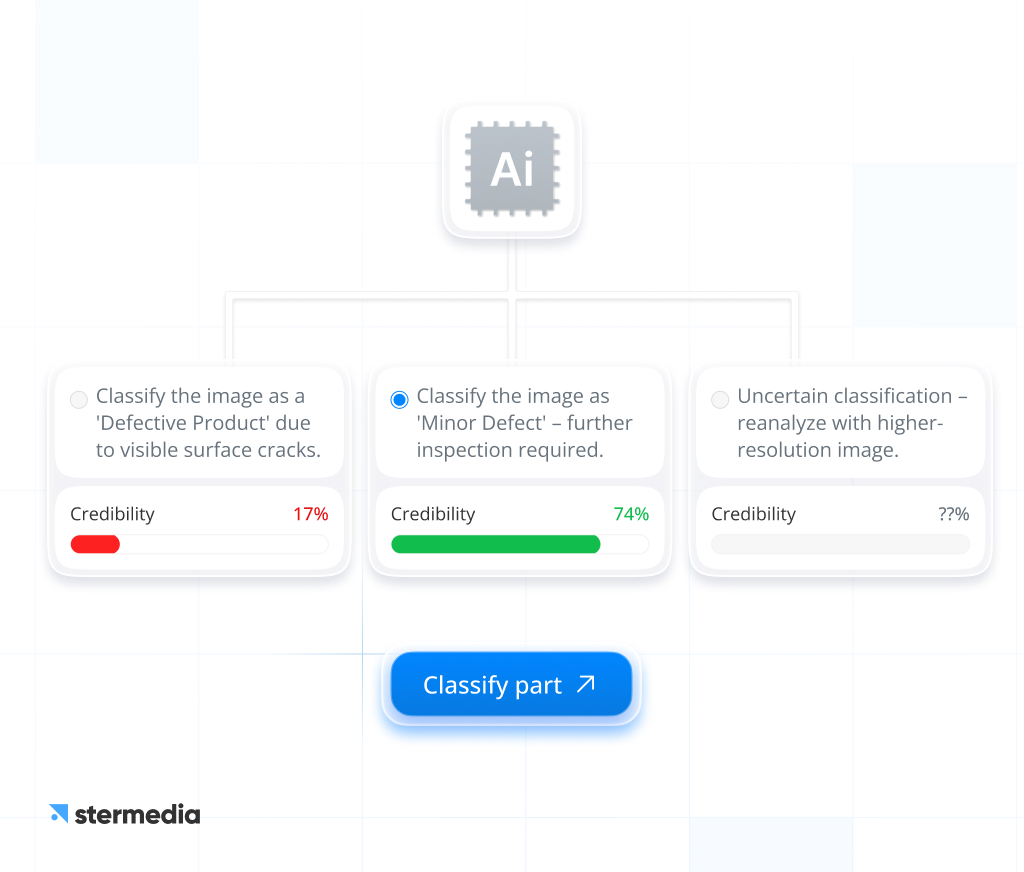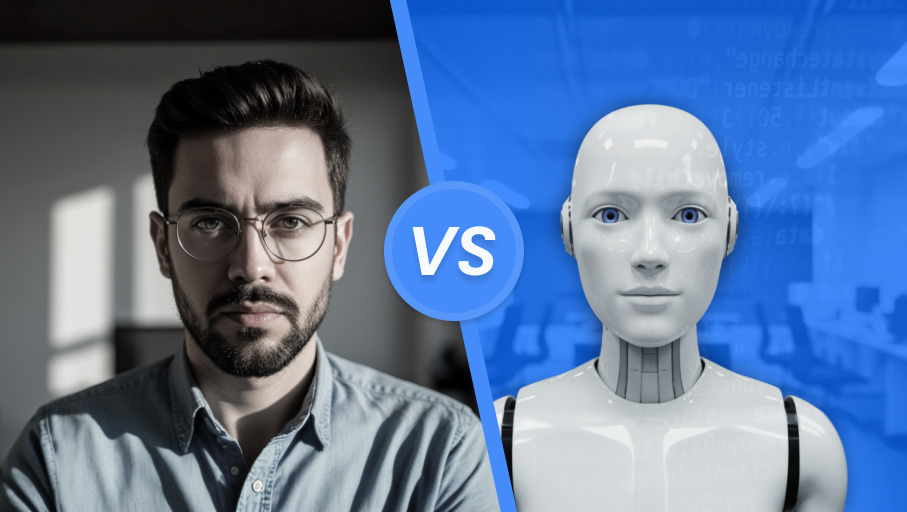Bridging AI and Humans is essential for making AI-powered software effective and user-friendly. While artificial intelligence transforms industries, one often-overlooked aspect is the role of user interfaces (UI) and frontend development in AI projects. Does AI actually need an interface, or can it function without one? Let’s explore this question and its significance for businesses implementing AI solutions.
1. AI vs. Traditional Software Development – Key Differences
Before addressing whether AI requires a frontend, it’s essential to understand the fundamental difference between traditional software and AI-powered systems.
In conventional applications, data processing follows a deterministic model – meaning the same input always produces the same output. If a user enters data into a form, the system records it and responds in a predictable manner.
However, AI (particularly large language models – LLMs) does not always behave predictably. The same query may yield different responses each time. AI systems can generate correct answers but also make mistakes or even “hallucinate”—producing information that sounds credible but has no factual basis. This fundamental difference impacts how interfaces for AI-powered applications should be designed.
2. Is a Frontend Necessary for AI Development?
The answer: it depends. While some AI applications function without a frontend, most benefit from a well-designed user interface.
When a Frontend May Be Unnecessary
Some AI applications require little to no direct user interaction, such as:
- Background Automation – AI models operating in backend systems (e.g., financial data analysis, fraud detection) may not require a user interface.
- Entertainment Applications – If AI generates content for fun and errors have no real consequences (e.g., entertainment chatbots, story generators), a complex frontend may not be needed.
Why AI Usually Requires a Frontend
For most AI projects, an interface is critical because:
- AI makes mistakes – Users must be able to correct errors, flag incorrect results, or provide feedback to refine outputs.
- Decisions remain human-driven – AI provides recommendations, but users make the final decisions.
- Businesses need risk control – AI errors can have serious consequences, so companies prefer to validate AI-generated results before acting on them.
3. Challenges in Designing AI Interfaces
Building user interfaces for AI-driven applications presents unique challenges:
1. Handling Asynchronous Responses
AI-generated responses are not always instantaneous. The UI should indicate processing time (e.g., with loading animations) to maintain user engagement.
2. Displaying Uncertain Answers
AI-generated content should be presented transparently, with clear indications that it may contain errors. Displaying multiple response options allows users to choose the most appropriate one.

3. Allowing User Corrections
Users should be able to correct AI-generated outputs and provide explanations. This feedback helps improve AI performance over time.
4. Ensuring a Simple and Intuitive UX
AI applications often involve repetitive tasks. A streamlined, distraction-free interface enhances decision-making efficiency.
For more information on best practices in designing AI-powered user interfaces, refer to the guide on UX best practices for AI applications.
4. AI Frontend for Static vs. Dynamic Data
AI interacts with two types of data:
- Static Data – AI operates on pre-collected, unchanging information (e.g., encyclopedic knowledge, historical reports).
- Dynamic Data – AI processes continuously updated data in real-time (e.g., weather forecasts, stock market trends).
For dynamic data, the frontend must efficiently handle updates, using real-time mechanisms such as WebSockets or live data streaming.
5. Recommendations for Businesses Implementing AI
Companies planning to integrate AI should consider:
- Choosing an Experienced AI Consultant – Not all AI vendors have real expertise. Reviewing case studies and past deployments is essential.
- Prioritizing User-Centered Design in AI Development – Since AI is never 100% error-free, UI/UX design must ensure usability and clarity.
- Implementing Validation Mechanisms – The interface should allow users to review and refine AI-generated results.
- Optimizing for Performance in AI and Software Development – AI applications often require heavy computation, making system architecture a key consideration.
Conclusion
So, does AI need a frontend? In most cases, yes. The interface in AI development is not just about presentation—it serves as a control layer, enabling users to review, correct, and validate AI-generated results. Businesses implementing AI should invest in a well-designed UI/UX to enhance trust, usability, and effectiveness.
Is Your Business Ready for AI?
If you’re considering integrating AI into your operations, working with an AI Consultant can help you build an intuitive, high-performing system tailored to your needs.
For more insights on AI development and consulting, visit Stermedia.ai.

Marcin Wierzbicki,
Chief Technology Officer and Co-founder at Stermedia



